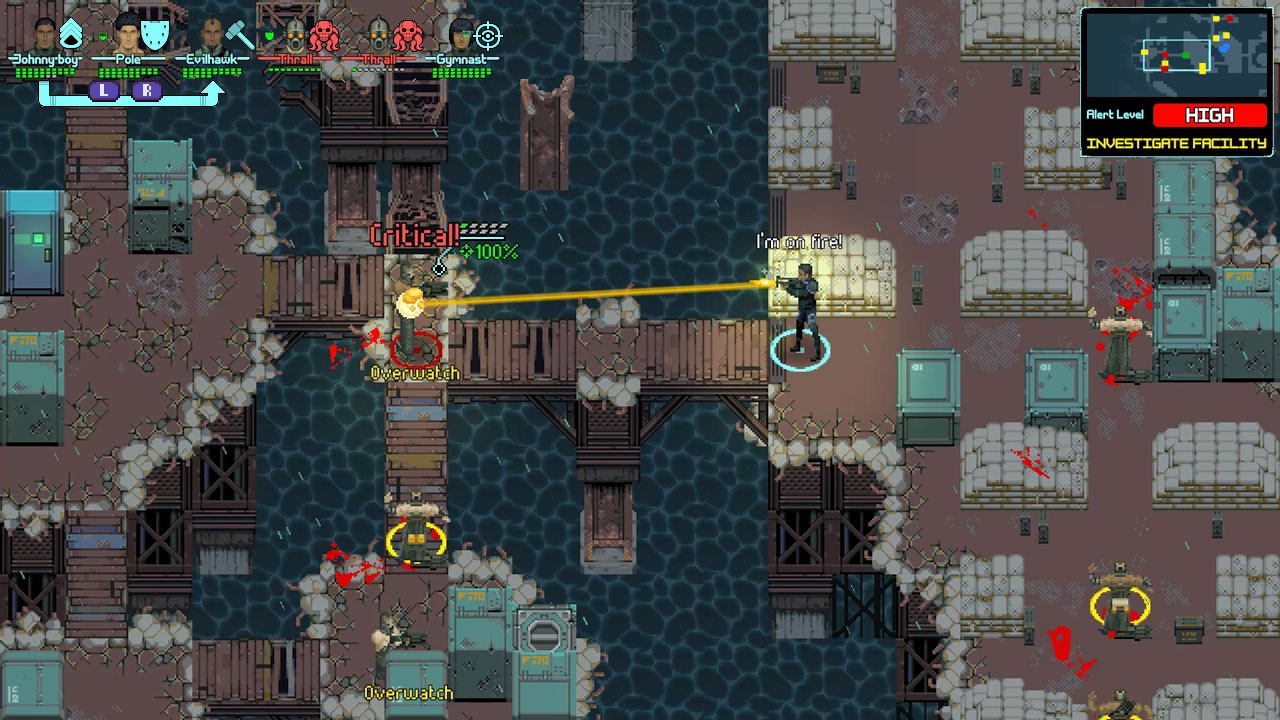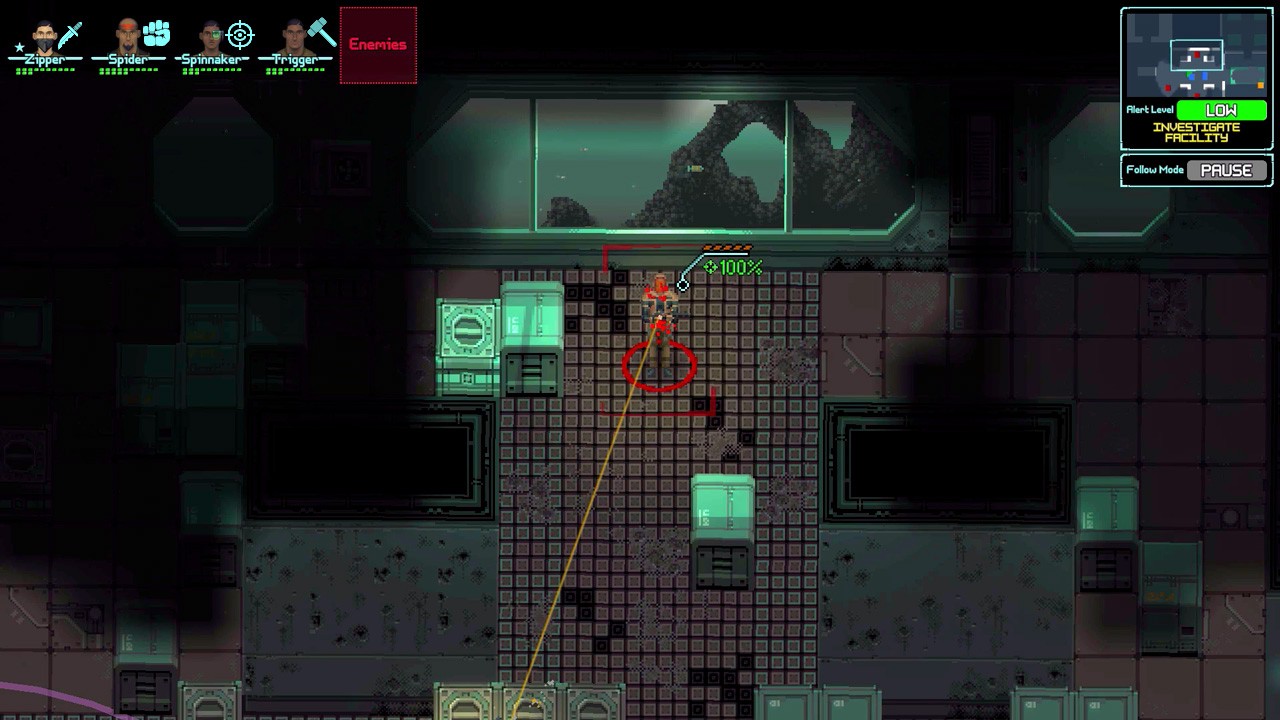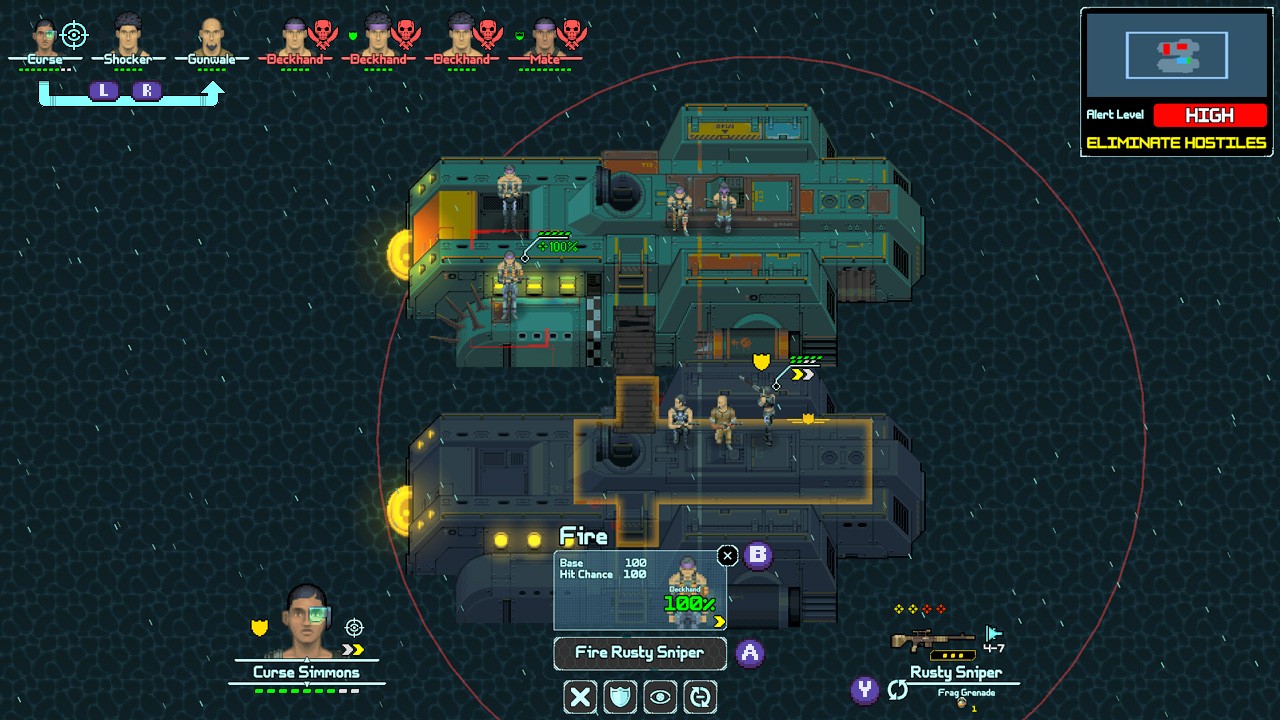
It would be fair to say that while platformers were the video games I started out with, it evolved into strategy games for the PC. In the strategy genre, I had no clue how vast it was. It wasn’t until I picked up on a gem called Final Fantasy Tactics that led to my obsession with other games such as Fire Emblem, Advance Wars, X-Com, and so on.
Depth of Extinction carves out a place in the tactical turn based strategy genre with its own unique take of action. It would be no surprise to say I saw a lot of X-Com in this game, as surprisingly, the X-Com series did have an expansion that focused on aquatic based combat along with the signature base building and RPG elements.
Booting up the game, I was greeted by a basic menu. I picked the difficulty I would stick with; it went through a brief tutorial of how to play the game, and then it took me straight to cut scenes of the story. Starting the game, the narrative was laid out with a basic premise. It’s sometime in the future and the planet Earth has experienced a massive flood. You are in charge of the last colony of human survivors. With your trusty submarine, you load up your crew and hire any mercenaries to help you along the way. You don’t have any time to waste, so as soon as you pick a spot that seems interesting, you decide whether to investigate it or look for a different focus.
The controls to the game weren’t hard to pick up on. You select the operative you want with the A button and it gives you a list of actions to choose from. Each action costs points to do, causing me to plan out everything carefully. An example of an action would be overwatch, setting my operative to guard a specific point, and if they sensed any movement, they would automatically take a shot. Then there was the basic attack feature, which was triggered by the right trigger. This would set up a firing range and gave you a percentage of success, similar to X-Com and other tactical turn based games. In other tactical strategy games, this made the defining difference between hitting a target or missing them all together. Just pray to the RNG Gods (Random Number Generator) that fortune favours you during combat. The catch with death on a mission of any squad-mate is that they can be taken down on the mission, but you can revive them for future missions and beyond if you get to them next time. Or another option would be to reload a checkpoint and try again.
Each mission is scattered with objectives, but they all had a basic set of variants. Eliminate X amount of enemies, loot their bodies for anything extra, such as money, gear, or new weapons, or safely evacuate the area. After you complete a mission, you’re able to review the rewards you have collected any skill points you can assign for levelling up an operative, and proceed to prepare for the next mission.

Along with the direct combat missions, you will have the meta game of the over world view. You pilot your sub and pick which area you want to head to. Events are randomly generated, leading to different scenarios such as bargaining with a friendly colony of traders, liberating prisoners held hostage by raiders, or just finding a repair platform to make sure your sub keeps going. I enjoyed this randomness as it did offset the repetitive nature of each mission in order to gain more resources.
Another layer of Depths of Extinction was the dynamic of your squad. When you finish the first mission, you are assigned permanently at least one other mercenary on your team. Within this game, everything costs credits. If I wanted to build a full team of mercenaries to take on each mission and level them up, it would cost credits to maintain their loyalty and their price would go up with each mission. This was never a problem as long as I took on a lot of missions, ensuring they would be happy enough to stay on with better gear, armour, and class specialization.
The classes in this game were interesting, but they offered nothing I haven’t seen before. They ranged from the soldier, assault, dead eye, wildcat, warden, and saboteur. The soldier, assault, and dead eye were standard classes that focused on assault weapons, sniper weapons, and close combat weapons such as shotguns.. They all focused on different damage dealt to enemies, whereas the sniper had the most range out of the three. The wildcat, warden, and saboteur were the other classes that were specialized in particular combat bonuses such as SMGs, a stealth attack, or having a different method of combat, but also changing the percentage to hit an enemy with a risky snapshot instead of a direct attack. These classes were the base classes, with others being able to be unlocked in the game, but you have to find them over time while you level up your characters.
The soundtrack of this game was well done. It sets the mood of the classic chip tune sequence of 80s horror films. As I progressed through each battle, the music picked up in tempo, adjusting to the suspense that awaited around the corner.
Diving into Depths of Extinction submerged me into the world of that solid 16-bit era. It resonates a style that is simple, but it is the details that make things pop out during my play through. The way environments were littered with different controls, knobs, gadgets, and weird experiments in each area caught my eye and is proof the developer injected personality into each encounter. Given that each battle felt the same, there was enough variety in it to keep my interest in it and encouraged me to explore the area after taking down all the hostiles.

What Depths of Extinction does correctly is to follow the basic formula of turn-based strategy games and adds its own flavour to it. Yes, it did not follow the basic base building structure, but the way the game was set up focused on the action and random events. Taking a page out of games like FTL, this game focused on the spontaneous actions I went through to build the story, instead of telling you directly where to go. This was a particular strength of the game as it gave me the freedom to develop the story, instead of being a linear experience in the narrative.
Where the game succeeds in many aspects, it had its flaws. Though the basic base building that echoed other turn-based strategy games such as X-Com was not present, it was not as grounded as if I had a main HUB to return to after missions. Yes, after each mission you get a post-action report, but it also felt like I was aimlessly drifting in a submarine fighting bad guys and getting loot. Yes, I was living the life of a pirate.
During my time playing this game, I had fun. Though sometimes I wasn’t sure what to do next, this uncertainty encouraged me to keep playing to see what would happen next to my squad. As long as I kept my missions going, we got paid, and my team stayed happy. Levelling up each squad member was a bonus as I progressed through the game, missions seemed to be more populous with raiders and they were positioned in better vantage points than where I deployed. Despite this obstacle, it was fun to go through a couple of engagements to see where it took me.
Depths of Extinction will work out for fans of the tactical turn-based strategy genre, but you need patience. It will take time to level up your characters and get better gear, but the investment will be worth it. Though I would have loved to have base building in this game, Depths of Extinction shines without it and amps up the action with enough things to focus on instead of multitasking another part of the game.
If you’re a fan of tactical turn-based strategy games, I’d recommend trying this game out when it’s on sale (either through Steam or any of the other platforms listed). The controls may change a little, but regardless of a controller or mouse and keyboard, it is intuitive enough to pick up and play to beat a lazy afternoon.
REVIEW CODE: A complimentary Microsoft Xbox One code was provided to Bonus Stage for this review. Please send all review code enquiries to press@4gn.co.uk.
Subscribe to our mailing list
Get the latest game reviews, news, features, and more straight to your inbox
Thank you for subscribing to Bonus Stage.
Something went wrong.
Depth of Extinction Review
-
Gameplay - 7/10
7/10
-
Graphics - 7/10
7/10
-
Sound - 7/10
7/10
-
Replay Value - 7/10
7/10
Overall
Summary
A tactical turn-based strategy game with twists around every corner.
Pros
- Fast-paced combat.
- Adds to the genre of great tactical turn-based strategy games.
- Don’t need to multi task with base management.
Cons
- The concept of the mercenaries not being with you permanently seems detrimental.
- I wish there was more content added to the story of the game.





